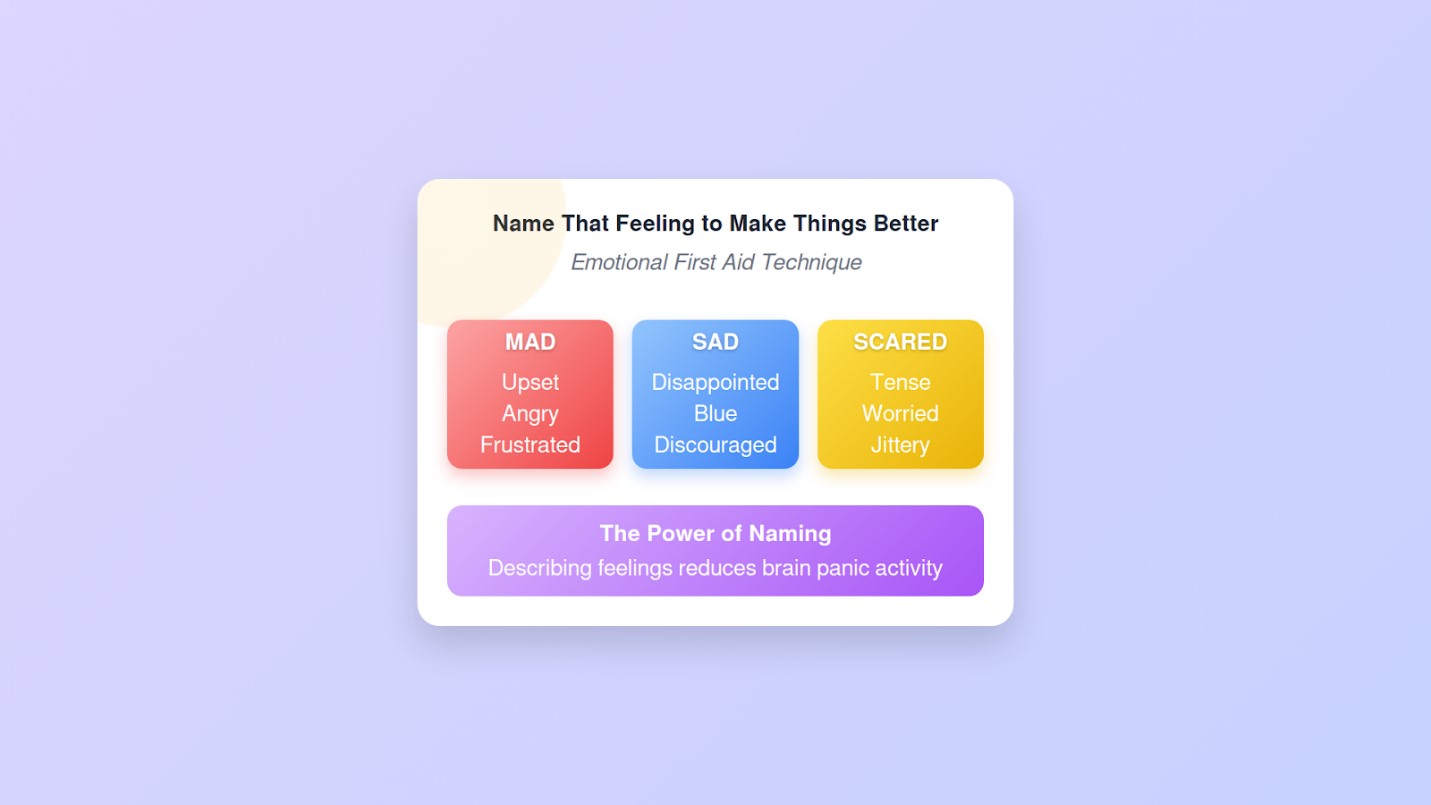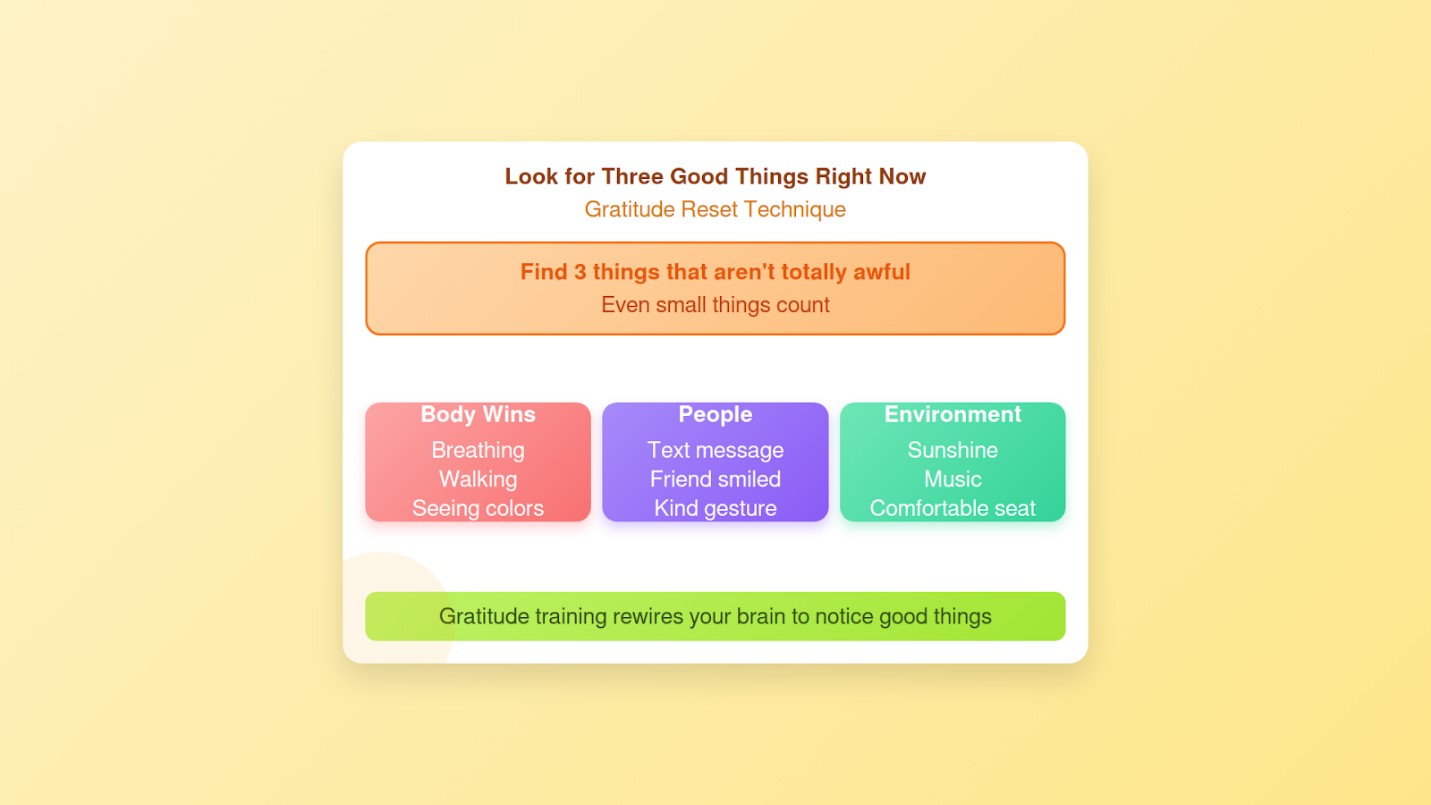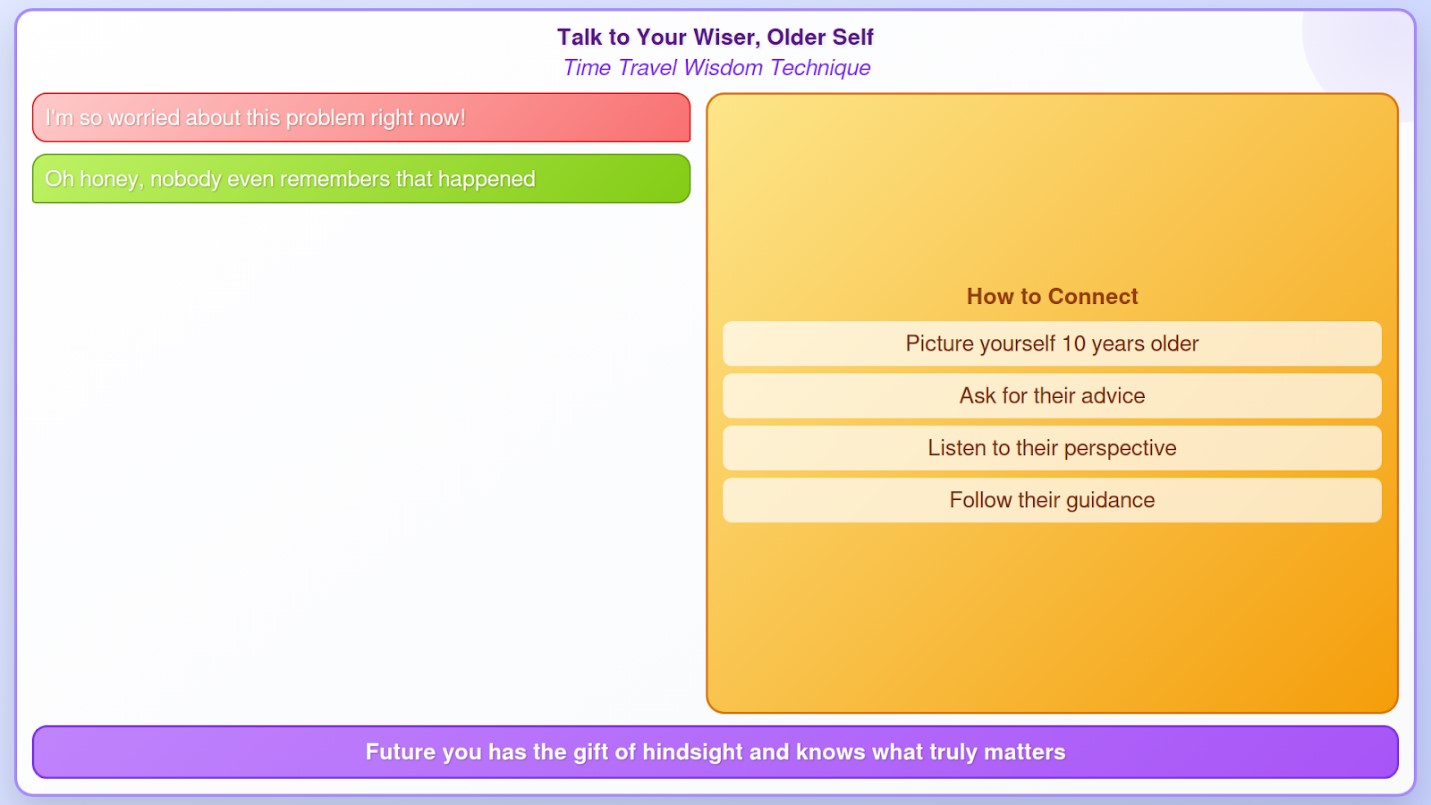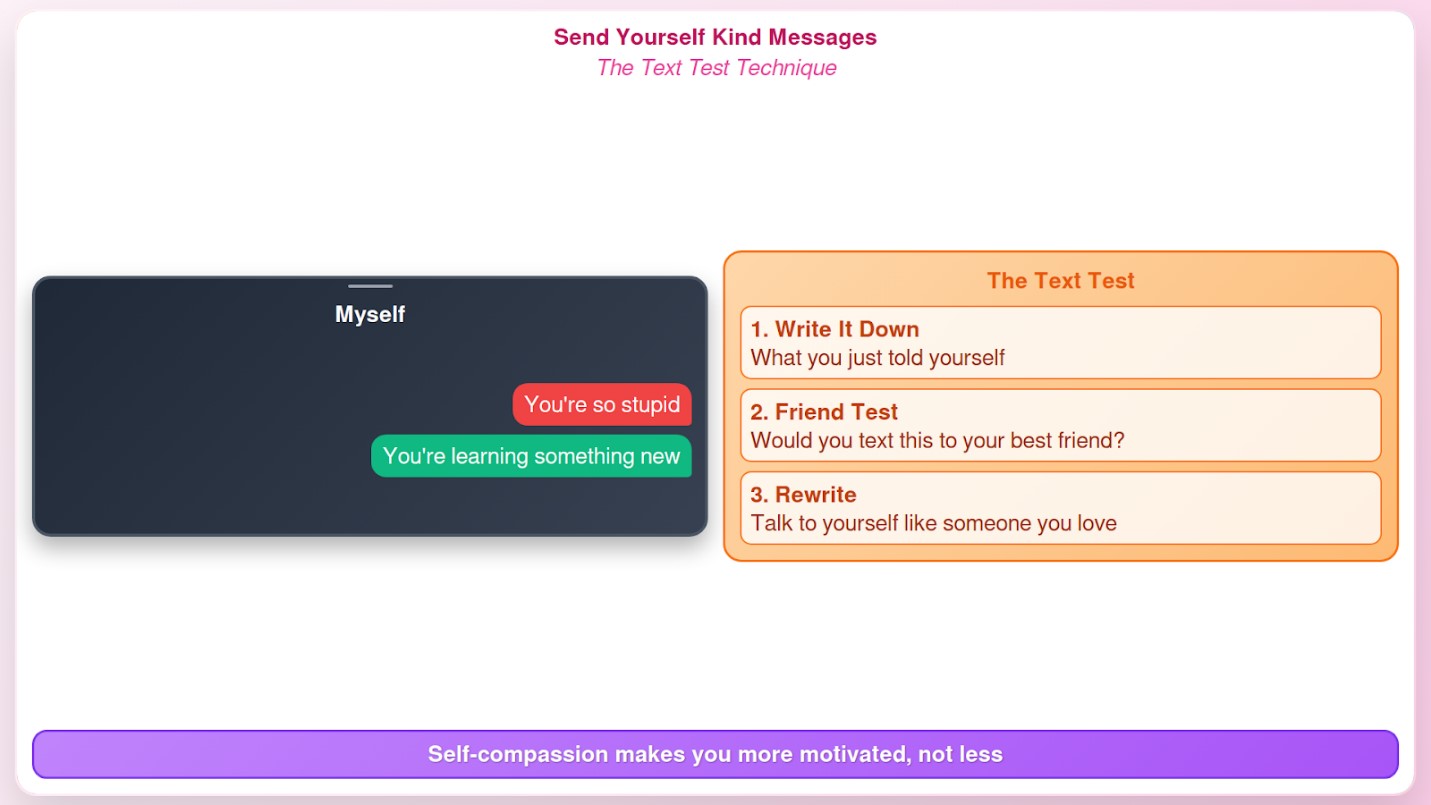That unpleasant critic in your head—do you know who it is? The one who loves to tell you what you did wrong today? We see that guy’s been busy.
Unbelievable, but that inner reviewer isn’t just annoying; it’s affecting your real life. Every time it says “you’re not good enough” or “you’ll probably mess this up,” your body believes it and begins to shut down. You lose confidence and energy, and all of a sudden, easy things seem difficult.
But guess what? It only takes less than 5 minutes to teach that voice to calm down. We’re talking about quick, tried-and-true tips that work when you need them most, without the need for therapy or meditation vacations.
How to Shift Negative Self-Talk in Under 5 Minutes
Catch it in the act and fight it with better ideas. Negative self-talk usually falls apart when you really look at it. It’s like a bully that runs away when you stand up to them.
1. Use Real Facts To Fight That Mean Voice
Brains love drama. So, when they say, “You’re bad at everything,” we need to get a lawyer quickly. Super easy way to fight it back:
- What is the real proof here?
- Would we tell this mean stuff to a friend?
- What examples show that this is not true?
Let us say that we mess up a speech. Our brain says, “Now everyone thinks you’re not good at what you do.”
But you just should ask yourself that did our other talks go well? Did you have tech issues? Has anyone said we’re not good at what we do, or are we just guessing?
According to Beck’s study from 1976, we’re very good at “all-or-nothing thinking,” which means that we can turn one bad event into proof that we’re doomed. But questioning these crazy ideas becomes our secret tool.
2- Name That Feeling to Make Things Better
Emotions are like loud smoke alarms that keep going off until someone pays attention. Then everything calms down.
This is what psychologists call “affect naming,” but we’ll just call it “emotional first aid.” Based on Lieberman’s brain scans, describing feelings greatly reduces panic-related activity.
Name your feelings like the following:
- Mad: upset, angry, frustrated
- Sad: disappointed, blue, discouraged
- Scared: tense, worried, or jittery
For example, we look through social media and see people with perfect lives, which makes us feel bad about our own.
Instead of saying, “Their lives are better than mine.” Try to say, “Right now I’m feeling jealous.” I can’t remember my wins because of these similarities. So, the name makes space between things.
Better to say that we’re feeling the mood, not getting lost in it.
How To Do it?
- If you feel like something is wrong, just pause.
- Describe what is really going on.
- Forget about feelings and add “right now.”
3. Hold the Superman Pose for One Minute
We know this sounds silly until we try it. Sometimes our bodies talk to our brains faster than our minds can keep up.
So just put your hands on your hips, stand with your feet apart, and chin up. Keep it for 1 minute.
Cuddy’s study from 2015 shows that power posing before difficult events makes people do better. Which makes stress hormones go down and confidence hormones go up.
How to do the pose right?
- Get some space (a bathroom will do).
- Set a timer for 60 seconds.
- Take a superhero stand.
- Rest your breathing
Standing tall and sure of yourself can actually make you feel more sure of your abilities.
4- Look at Yourself From Very High Up
Do you ever want to make your problems smaller? You should float up into space and look down.
Everything seems big when we’re in a story. But from above, that awkward moment looks like a tiny dot. This is what Kross and Ayduk call “self-distancing,” and it calms our emotions right away.
Steps for space view:
- Imagine that you are floating above you right now.
- Get farther away so you can see the whole building.
- Proceed until Earth takes on the shape of a ball.
- See how little this moment is.
What about that speech you hate? Invisible from space. We actually change the way we deal with worry when we change our point of view.
5. Use Your Mistakes To Learn From Them
Spoiler: Failures are actually useful info that’s been hiding.
Let’s not be hard on ourselves; instead, let’s look into what happened like scientists. People who see failures as opportunities to learn actually get better over time.
Blackwell’s study from 2007 looked at kids who had this way of thinking. Some of their grades got better, while others stayed the same. As a result, rethinking isn’t just good for you; it’s also good for your success.
A simple swap: Say “I learned what doesn’t work” instead of “I failed.”
Much of our negative inner dialogue comes from deeply rooted beliefs we’ve unknowingly adopted something explored in Don’t Be a Crab, a book that unpacks how these hidden patterns shape our mindset.
6- Look for Three Good Things Right Now
Gratitude is like restarting a computer that isn’t working well. So in bad cases, we’ll look for what’s really working.
Come up with three things that aren’t totally awful right now. Little things matter, like how warm your coffee is, whether no one is yelling, and how your socks match.
This method was tried in Seligman’s happiness study in 2005. Shortly after starting the treatment, people felt a lot better, and the benefits lasted for months.
Why Does It Work?
Unfortunately, our brains are naturally looking for problems (survival mode). But gratitude training changes that. Therefore, we automatically start to notice good things.
Short list of categories for gratitude:
- Body wins: Things like breathing, walking, and seeing colors.
- People around you: Someone text messaged, and a friend smiled.
- Gifts from the environment: sunshine, music, and a nice place to sit.
Be detailed. “I’m thankful for my health” sounds like a platitude. But it sounds different to say “I’m thankful my knee doesn’t hurt today.”
7- Sit Down and Take a Deep Breath
Our nervous system has an off switch that we can’t even see.
Stress makes us breathe hard and gasp like we’re running a race and this makes our brain feel even more scared. But we should instead make our system think we’re completely zen.
The pattern is four counts in, four counts out, and then four counts in. Complete this 5 times.
Slow, deep breathing can quickly cool down an upset state. Also in 2018, Zaccaro’s team found that slow exhales put our bodies into “chill mode,” which slows down everything from our heart rate to our thoughts.
Easy steps:
- Stand with one hand on your stomach and the other on your chest.
- Any movement should only happen in the bottom hand.
- Inhale slowly through your nose.
- Stop for a moment at the top
- Continue breathing out for longer than you took in.
If we can control our breath, we can control our brain.
8- Talk to Your Wiser, Older Self
The person we are tomorrow is like an old friend who has already been through what we’re freaking out about today.
Today’s us gets caught up in immediate chaos. What about the future us? They’ve got the gift of looking back and can see what actually matters.
The time travel question is, “What advice would you give yourself if you could go back in time and see this event?”
According to Hershfield’s (2011) research, people who talk to their older selves make better decisions since they look past the pain of today and see what will last.
How to do it?
- Think about being ten years older now.
- Imagine that this smarter version offers to help.
- What would they say about the problems we’re facing now?
- What else could they do to change things?
That way, we get wiser over the years without having to wait for gray hair.
This kind of mental time travel changes the way people make decisions.
9- Get Your Thoughts Out of Your Head
Sometimes we need to clean out our minds like spring cleaning. When we get things out of our heads and onto paper, they become far away quickly.
The cool thing is that writing changes the way our brains deal with mental junk, and writing about worry makes it less noticeable.
How to “brain dump”?
- Take any paper you can find.
- Write down the offensive thought.
- It’s not important to be correct or neat.
- Get it all rolled up and put it somewhere else.
The moment those words are on paper, they stop echoing in our brains. This easy action breaks the link between annoying thoughts and sadness.
It’s like telling our brain, “Took care of this already,” even though we just put it on paper.
10- Make Fun of Your Dramatic Inner Voice
Our internal critic acts like it’s hosting the Oscars when really it’s just throwing a tantrum. Time to make fun of it back.
Finding the silly side of our dark thoughts strips away their power because laughter literally shifts brain chemistry, cutting stress chemicals.
Consider “Everyone will judge my presentation.” Really? The IT guy in the back row’s goanna rush home and critique your slide changes to his houseplants?
Comedy tricks:
- Blow the worry up until it’s obviously silly
- Picture your anxiety as a ridiculous cartoon villain
- Wonder what a stand-up comic would say about this drama
If you’re often trapped in spirals of unwanted thoughts, these mental patterns can be addressed with sharper tools.
11- Check Your Energy Meter
We either fill up or empty our tanks with every thought. But it’s time to examine the thoughts that are draining our energy.
When we notice that we’re being mean, we should ask ourselves, “Does this make me feel better or weaker?” We need to think about something else if it’s making us feel like trash.
People who keep track of their energy levels are healthy and happy. On the other hand, bad thoughts actually drain our mental batteries.
The energy check:
- Notice when a thought pops up
- Ask, “Is this giving me power or taking it away?”
- If it’s draining, switch to something better
- Pick a thought that makes you feel more alive
12- Create Your Power Phrase
There are times when we need a secret tool to fight our mean and critical inner voice, and just a few strong words can do amazing things.
The key is to find words that are real and powerful for us. Words like “think upbeat” aren’t enough; we need something more specific.
What do you need to do?
- Think of the worst thing you ever experienced.
- Write a short message that says the opposite.
- Make it feel real and like you.
- Practice saying it out loud.
Bormann’s tests with war soldiers in 2007 showed that repeating important sentences helped them sleep better and feel less stressed.
Examples that work:
- “I’m figuring it out as I go.”
- “Good enough is still good.”
- “I’ve handled tough stuff before.”
13- Be the Boss of Your Mental Movie
Our brains are constantly making up stories about what’s happening. The problem is, they’re often horror films when they could be comedies.
When we catch our mind spinning some dramatic tale, we can directly hit pause and rewrite the scene. We’re the director here, not some victim watching whatever garbage our brain decides to play.
Director’s toolkit:
- See when your brain starts telling a story
- Say “Cut!” out loud or in your head
- Ask, “What’s a better version of this scene?”
- Rewrite it with yourself as the hero
Some people feel more confident and able when they see themselves as the main character in their own life story.
Story swap examples:
- “I’m about to bomb this meeting.” → “I’m about to share some good ideas.”
- “Nobody likes me” → “I’m learning how to connect with people”
See ii? Changing how we tell our own story changes our brain chemistry and stress levels.
14- Send Yourself Kind Messages
Would you text your best friend the mean stuff you tell yourself? Probably not. So why is it okay to send those messages to you?
This simple test catches us being way harsher to ourselves than we’d ever be to someone we care about. Once we notice the double standard, it becomes easier to flip the script.
The text test steps:
- Write down what you just told yourself
- Imagine sending that exact message to your best friend
- If you wouldn’t send it, don’t keep it in your head
- Rewrite it like you’re talking to someone you love
Self-compassion actually makes us more motivated, not less.
Message makeovers:
- “You’re so stupid” → “You’re learning something new”
- “You always mess up” → “You’re human and that’s okay”
15- Play the Three Scenarios Game
Our brains love worst-case thinking, but what if we forced them to consider all possibilities?
Instead of jumping straight to disaster mode, we’ll line up three options:
- The absolute worst thing that could happen
- The best possible outcome
- What’ll probably really go down.
The three-column approach:
- Write “Worst Case” at the top of one column
- Add “Best Case” and “Most Likely” next to it
- Fill in each column honestly
- Notice how “Most Likely” usually wins
Take job interviews as an example.
- Worst case: we bomb completely and never get hired anywhere.
- Best case: we nail it and get the perfect job.
- Most likely: we do okay, learn something, and life goes on.
Nine times out of ten, that middle column is where reality lives.
16- Check In with Your Future Self
Imagine you’re 80 years old, sitting in a comfy chair, looking back on your life. What would that wise version of you say about today’s drama?
Old you have seen it all, survived everything, and know what actually matters. They’re probably giggling at the stuff that’s freaking you out right now.
Time machine conversation:
- Picture yourself with gray hair and lots of life experience
- Ask them what they think about your current problem
- Listen to their gentle, wise perspective
- Follow their advice
Most of the time, the elderly will say something like “Oh, honey, that thing you’re worried about? Nobody even remembers it happened.”
Older people naturally focus more on positive stuff and let the small things slide (Reed et al., 2014). They’ve learned what’s worth worrying about and what isn’t.
FAQs
What are the 3 C’s of negative self-talk?
Catch it (notice when it happens), Challenge it (ask for proof), and Change it (swap for something better).
What is the root cause of negative self-talk?
Your brain wants to keep you safe, but it’s stuck in caveman mode and sees everything as a threat. Usually, it’s just old software that needs to be removed and replaced.
How to change a negative self-concept?
Talk to yourself like you would a good friend, and don’t worry about the things you do wrong. Gradually, little wins build up to big changes.
What are some negative self-talk examples?
“I always screw things up,” “Nobody likes me,” “I’m not smart enough,” or “I’ll probably fail anyway.”
How to help someone with negative self-talk?
Listen without trying to fix anything, and let them know when they’re being too hard on themselves in a kind way. Simply asking them, “Would you talk to me that way?” can help them see things differently.
How to stop negative self-talk and anxiety?
First, calm down by taking five deep breaths. Then, use facts to fight the scary thought. Don’t ask “What if everything goes wrong?” but instead ask “What would actually happen?”
What does negative self-talk psychology tell us?
We naturally look for problems instead of celebrating successes; this is known as the negativity bias. Though the good news is that we can train our minds to be more balanced.














